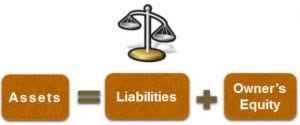Shares outstanding refer to a how to find number of shares outstanding company’s stock currently held by all its shareholders, including share blocks held by institutional investors and restricted shares owned by the company’s officers and insiders. A company also often keeps a portion of its total outstanding shares of stock in its treasury from both initial stock issues and stock repurchase. These are called “treasury shares” and are not included in the balance. Increasing treasury shares will always result in decreases and vice-versa. Financial lingo can be confusing, but it is nonetheless very important to grasp for those interested in investing in products like stocks, bonds, or mutual funds. Many of the financial ratios used in the fundamental analysis include terms like outstanding shares and the float.
- While shares outstanding account for company stock that includes restricted shares and blocks of institutional shares, floating stock specifically refers to shares that are available for trading.
- Investors can find the total number of outstanding shares a company has on its balance sheet.
- Denoting the greatest proportion of stocks trading on the exchanges, the float consists of regular shares that many of us will hear or read about in the news.
- If you’re looking at buying stock, you can find this information is available on financial statements and through stock exchange websites.
- Dividing the number of shares to be purchased by the number of shares outstanding reveals the percentage of ownership that the investor will have in the business after the shares have been purchased.
Outstanding Shares vs. Issued Shares
Let’s go through the terms shares and float so that next time you come across them, you will know their significance. If there is a difference between the number of shares issued and outstanding, the difference is treasury stock. In other words, a company has issued shares and then bought some of the shares back, leaving a reduced number of shares that is currently outstanding.
How to Calculate Outstanding Shares: The Basics
Yarilet Perez is an experienced multimedia journalist and fact-checker with a Master of Science in Journalism. She has worked in multiple cities covering breaking news, politics, education, and more. Check your Securities /MF/ Bonds in the consolidated account statement issued by NSDL/CDSL every month. The modus operandi observed is that once a client pays amount to them, huge profits are shown in his account online inducing more investment. However, they stop responding when client demands return of amount invested and profit earned.
Would you prefer to work with a financial professional remotely or in-person?
Of course, merely increasing the number of outstanding shares is no guarantee of success; the company has to deliver consistent earnings growth as well. Diluted shares include the effect of contracts or products the company has issued, which could result in new shares being issued in the future. The basic shares outstanding is the starting point when calculating the diluted shares outstanding.

How to Calculate Common Stock Outstanding From a Balance Sheet
When this takes place, a company’s outstanding shares increase, and a higher degree of liquidity results. By contrast, a reverse stock split occurs when a company seeks to elevate its share price. Often, a company does this to meet listing requirements, which often require a minimum share price. A company’s outstanding shares decrease when there is a reverse stock split. A company generally embarks on a reverse split or share consolidation to bring its share price into the minimum range necessary to satisfy exchange listing requirements. While the lower number of outstanding shares often hampers liquidity, it could also deter short sellers since it becomes more difficult to borrow shares for short sales.

Understanding Outstanding Shares – Meaning, Example, Formula

An increase can dilute the value https://www.bookstime.com/ of existing shares, affecting earnings per share (EPS) and potentially impacting stock prices. Typically, investors calculate outstanding shares quarterly or annually when reviewing financial reports. Let us understand where investors and analysts can find the data regarding the total outstanding shares of a company through the points below. Basic shares mean the number of outstanding stocks currently outstanding, while the fully diluted number considers things such as warrants, capital notes, and convertible stock.
- You can find this figure on stock listings and through stock data providers.
- If the number of outstanding shares increases, the PE ratio will also increase, on the other hand, if the number of outstanding decreases, the PE ratio will also decrease.
- Company A issues 1000 shares, out of which 400 shares are floated to the public, 400 shares are held by company insiders and 200 shares are kept in the company treasury.
- 11 Financial may only transact business in those states in which it is registered, or qualifies for an exemption or exclusion from registration requirements.
- Once you have collected the total number of preferred shares, common shares outstanding, and treasury shares, you’re ready to do your calculation.
- More specifically, treasury shares are the portion of shares that a company keeps in its treasury.
Finding Basic Shares Outstanding in Financial Statements
Companies can also undergo a reverse stock split or share consolidation. The float is the portion of outstanding shares that’s most relevant for smaller investors. On the balance sheet, there is a line item description that states the number of shares outstanding. But there are several other parameters that investors should analyse before investing in a company.
Look at the Preferred Stock Line Item
Companies may provide executives with stock options that can be converted to shares. However, these stock benefits are not included in the tally of shares outstanding until shares are fully issued. Warrants are instruments that give the holder a right to purchase more outstanding stock from the company’s treasury. Whenever warrants are activated, stocks outstanding increase while the number of treasury stocks decreases. If all these warrants are activated, XYZ will have to sell 100 shares from its treasury to the warrant holders. Knowing a https://www.facebook.com/BooksTimeInc/ company’s number of shares outstanding is key when calculating critical financial metrics and determining share value as a portion of ownership.
The Basics of Outstanding Shares and the Float
We do not include the universe of companies or financial offers that may be available to you. Although the two both relate to the number of shares a public company has issued, they are distinct from one another. Company A has issued 25,800 shares, offered 2,000 shares to two partners, and retained 5,500 stocks in the treasury. Let us understand the formula that shall act as the basis of our understanding and the formation of the outstanding shares equation through the discussion below.



Leave A Comment